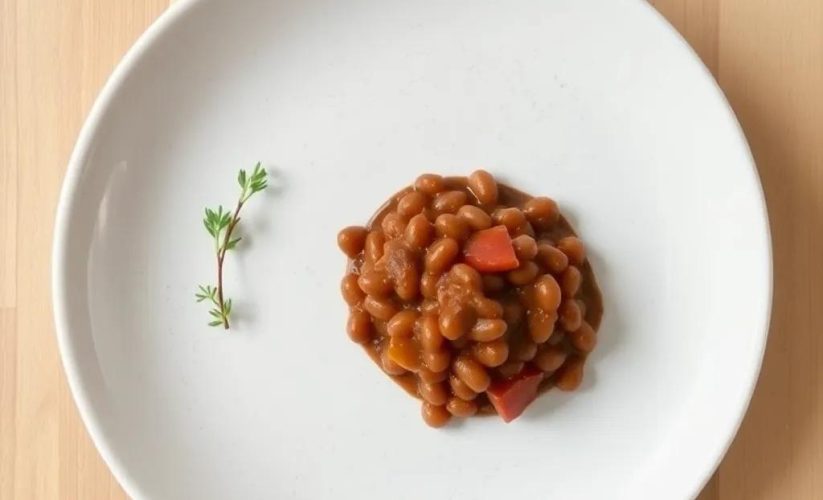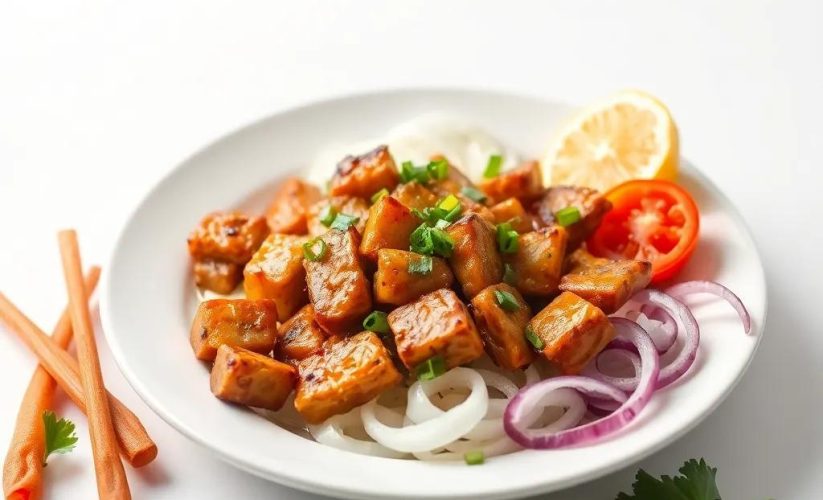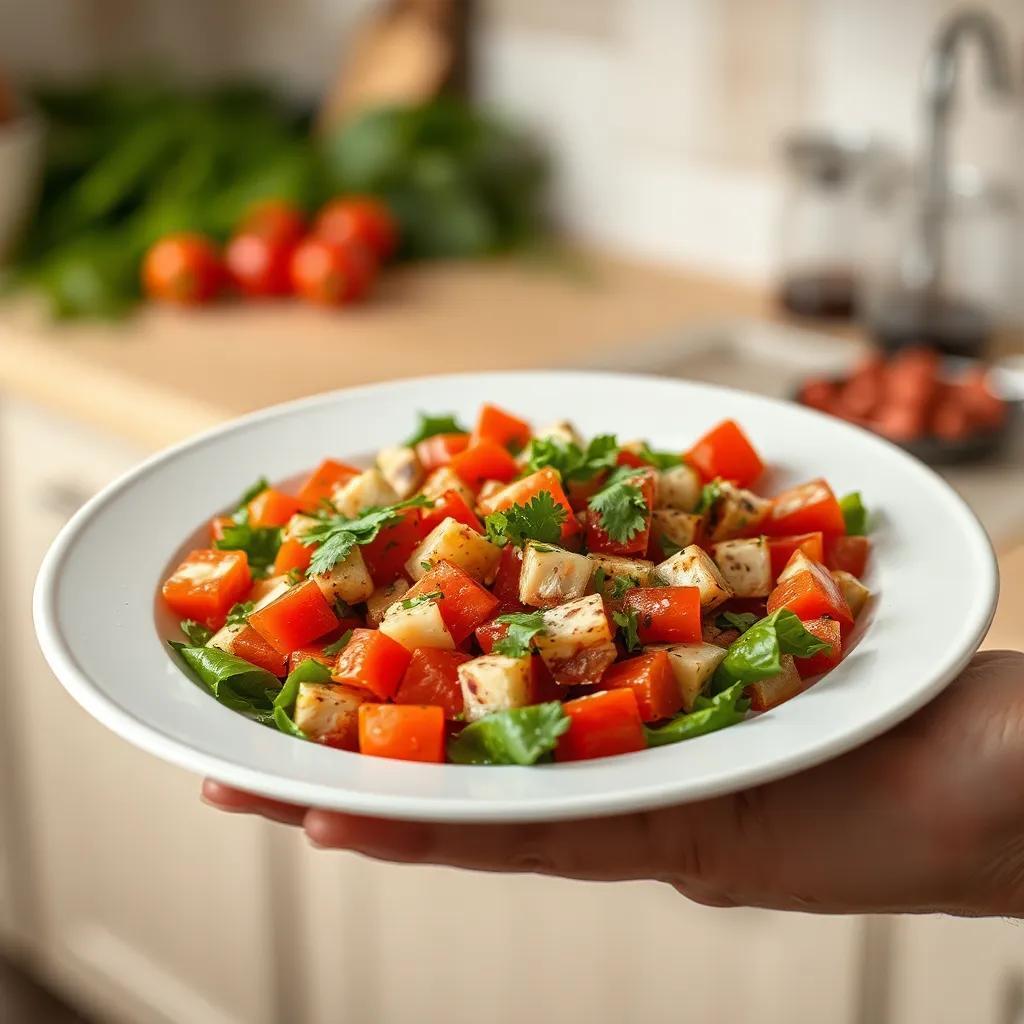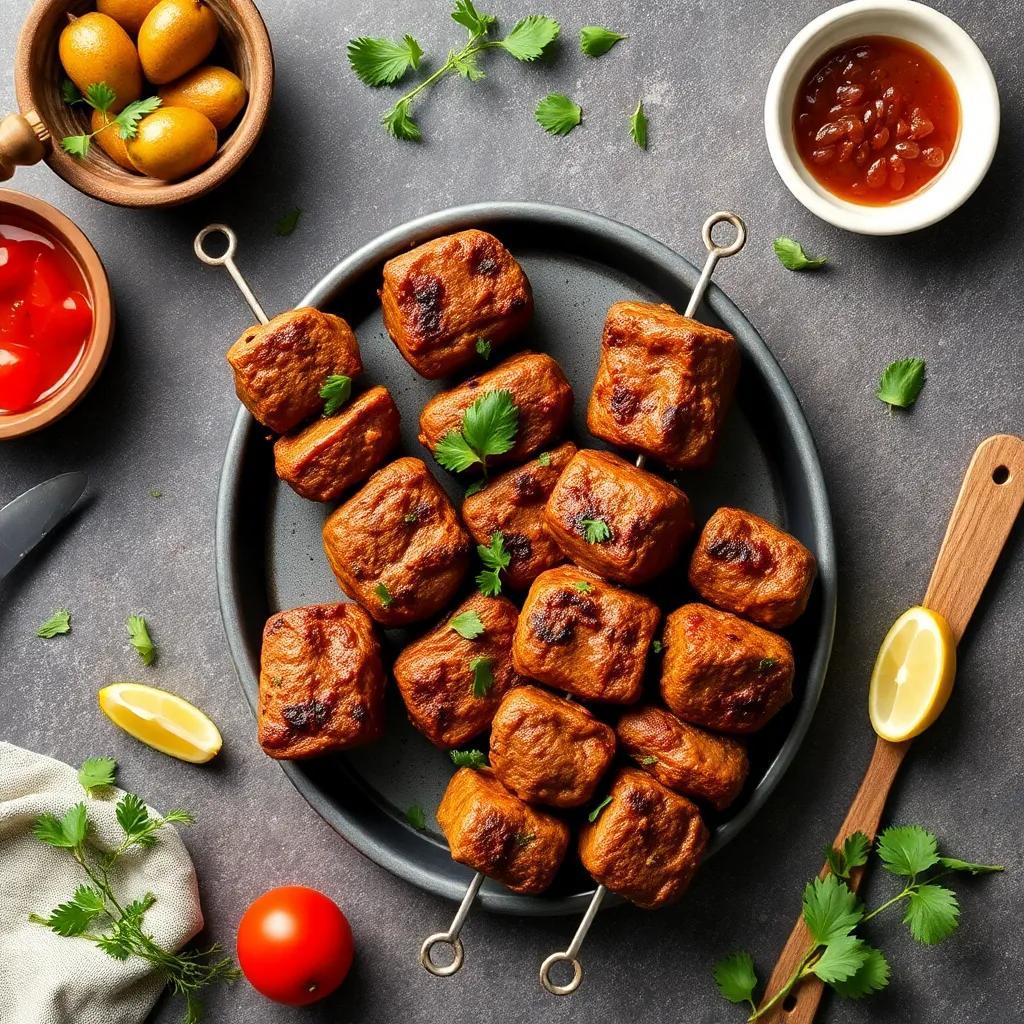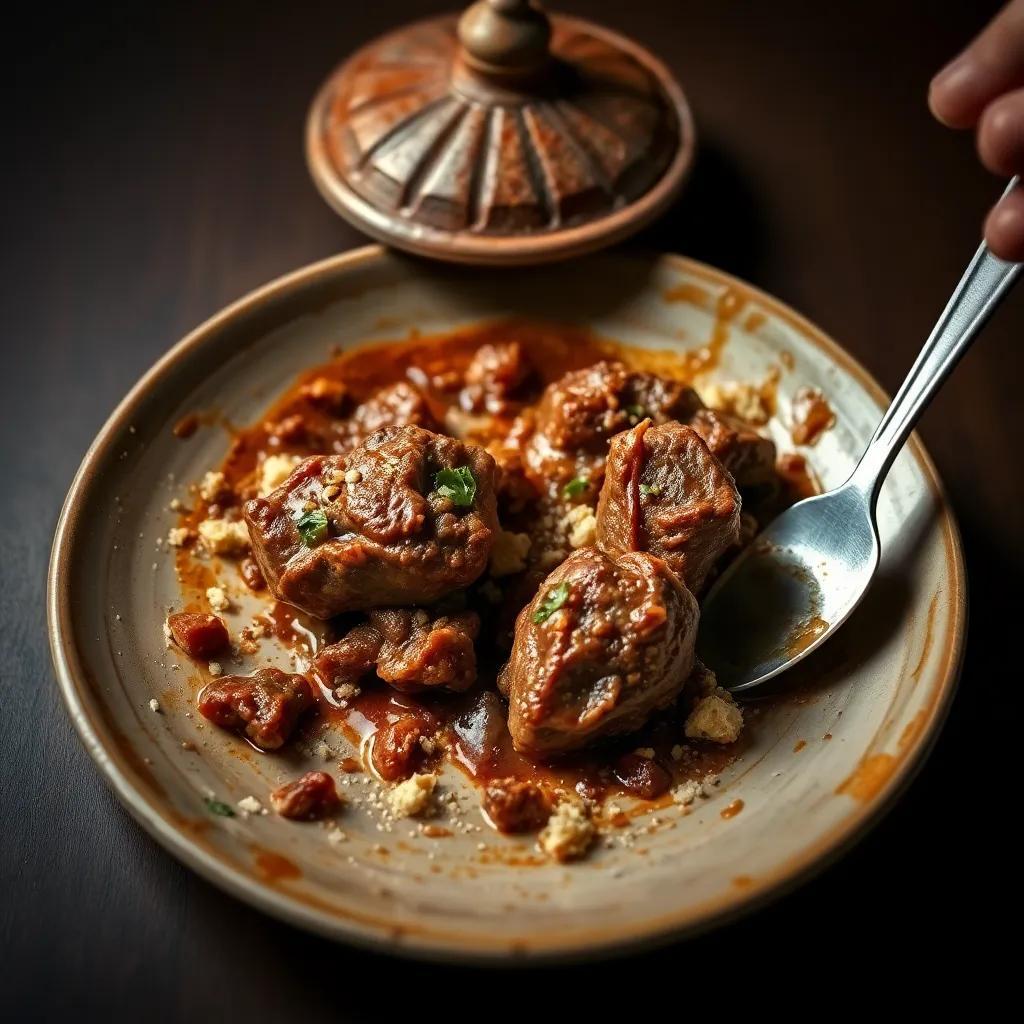Crispy Vegan Falafel Recipe: Easy, Healthy, and Gluten-Free Delight
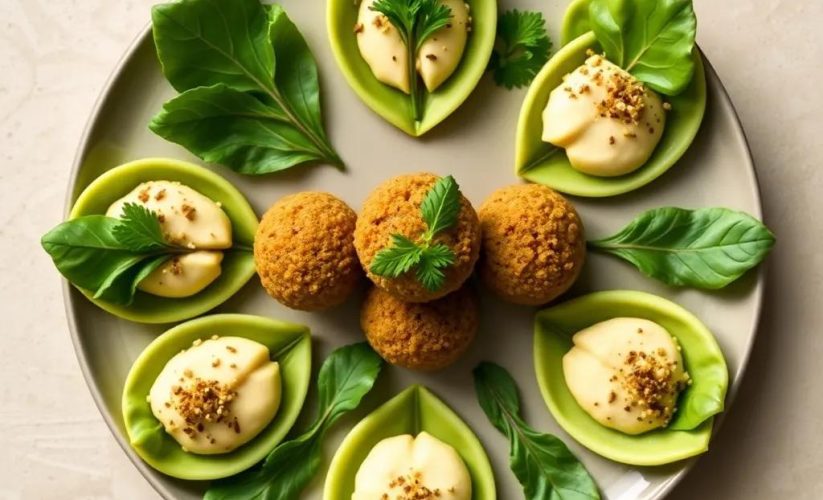
Crispy Vegan Falafel Recipe: Easy, Healthy, and Gluten-Free Delight
🌍 Cuisine: Middle Eastern
⚙️ Difficulty: Easy
Ingredients
Nutrition Facts
180
Instructions
- Drain the soaked chickpeas and pat them dry with a towel.
- In a food processor, combine the chickpeas, onion, garlic, parsley, cilantro, cumin, coriander, cayenne pepper, salt, and pepper.
- Pulse until the mixture is coarse but holds together when pinched. Be careful not to over-process into a paste.
- Transfer the mixture to a bowl and stir in the baking powder and chickpea flour. Add more flour if the mixture feels too wet.
- Cover and let the mixture rest in the refrigerator for at least 30 minutes to firm up.
- Heat the oil in a deep skillet over medium heat to about 350°F (175°C).
- Shape the falafel mixture into small balls or patties, about 1 ¼ inches in diameter.
- Carefully fry the falafel in batches until golden brown and crispy on all sides, about 3–4 minutes per side.
- Use a slotted spoon to transfer the falafel to a paper towel-lined plate to drain excess oil.
- Serve warm with lemon wedges, tahini sauce, or your favorite dipping sauce.
- Enjoy your crispy, healthy, gluten-free vegan falafel!
Serving Suggestions
- Serve falafel in a gluten-free pita pocket with fresh lettuce, tomato, and cucumber slices.
- Pair with a refreshing cucumber and tomato salad dressed with lemon vinaigrette.
- Top falafel with creamy tahini or vegan garlic sauce for added flavor.
- Serve alongside warm gluten-free flatbreads or rice for a heartier meal.
- Use falafel as a protein-packed topping for a colorful gluten-free grain bowl.
- Enjoy falafel as finger food with assorted dips like hummus, baba ganoush, or spicy harissa.
- Garnish with chopped fresh herbs and a squeeze of lemon for brightness.
Table of Contents
- Intro
- Ingredient Notes
- Tips & Variations
- Leftovers & Storage
- Behind the Recipe
- FAQ
- Let’s Get Cooking!
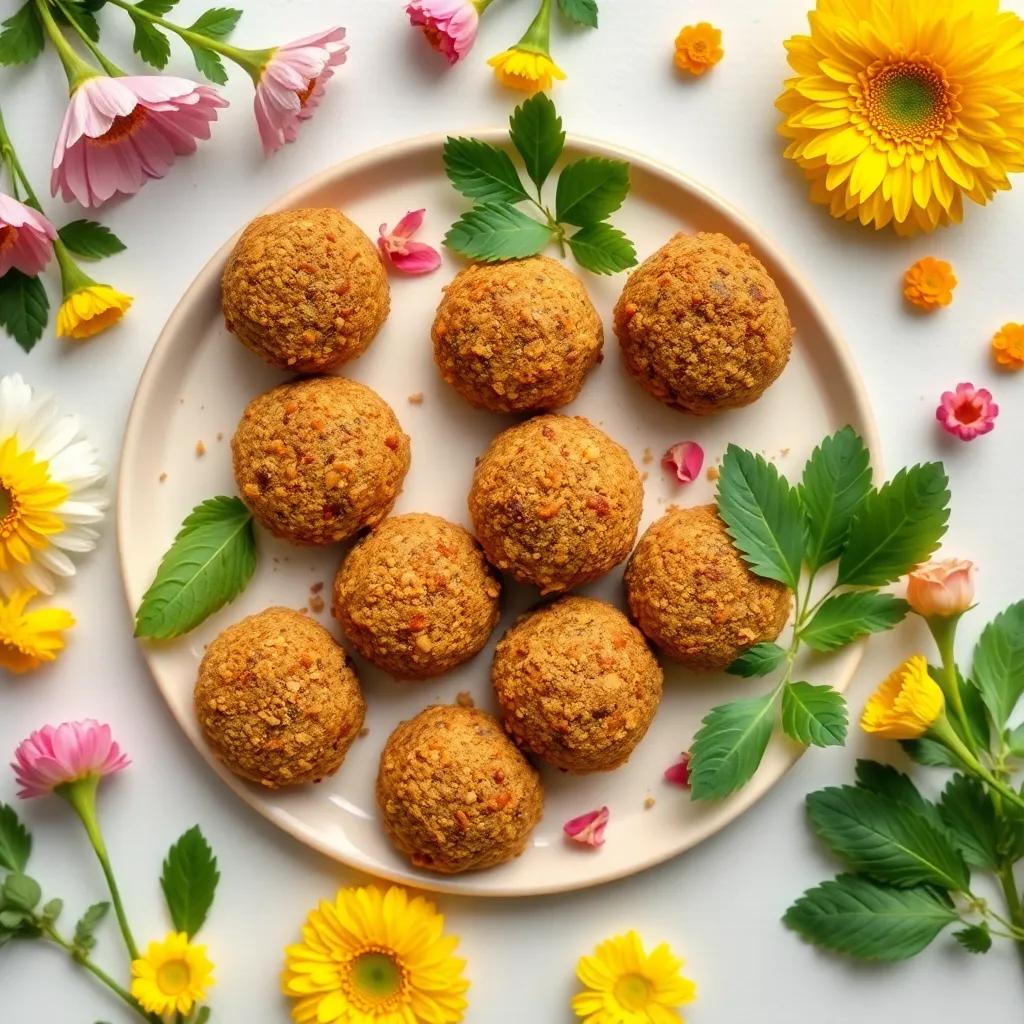
Intro
There’s something truly special about falafel—those golden, crispy little bites that bring both comfort and excitement to the table. This recipe strikes the perfect balance between simplicity and flavor, making it an excellent choice whether you’re a seasoned cook or trying your hand at vegan cooking for the first time. Beyond being delicious, these falafels are packed with wholesome ingredients and naturally gluten-free, offering a light yet satisfying option that complements any meal or occasion.
Ideal as a crowd-pleasing appetizer for gatherings or a hearty snack paired with your favorite dips, these falafels transform familiar ingredients into something wonderfully crispy and aromatic. Their versatility means you can enjoy them solo with a squeeze of fresh lemon or build a vibrant meal around them—perfect for lunchboxes, dinner parties, or casual weekend feasts. Plus, with a relatively quick prep and cook time, you’ll find yourself reaching for this recipe whenever the craving for something nourishing and flavorful strikes.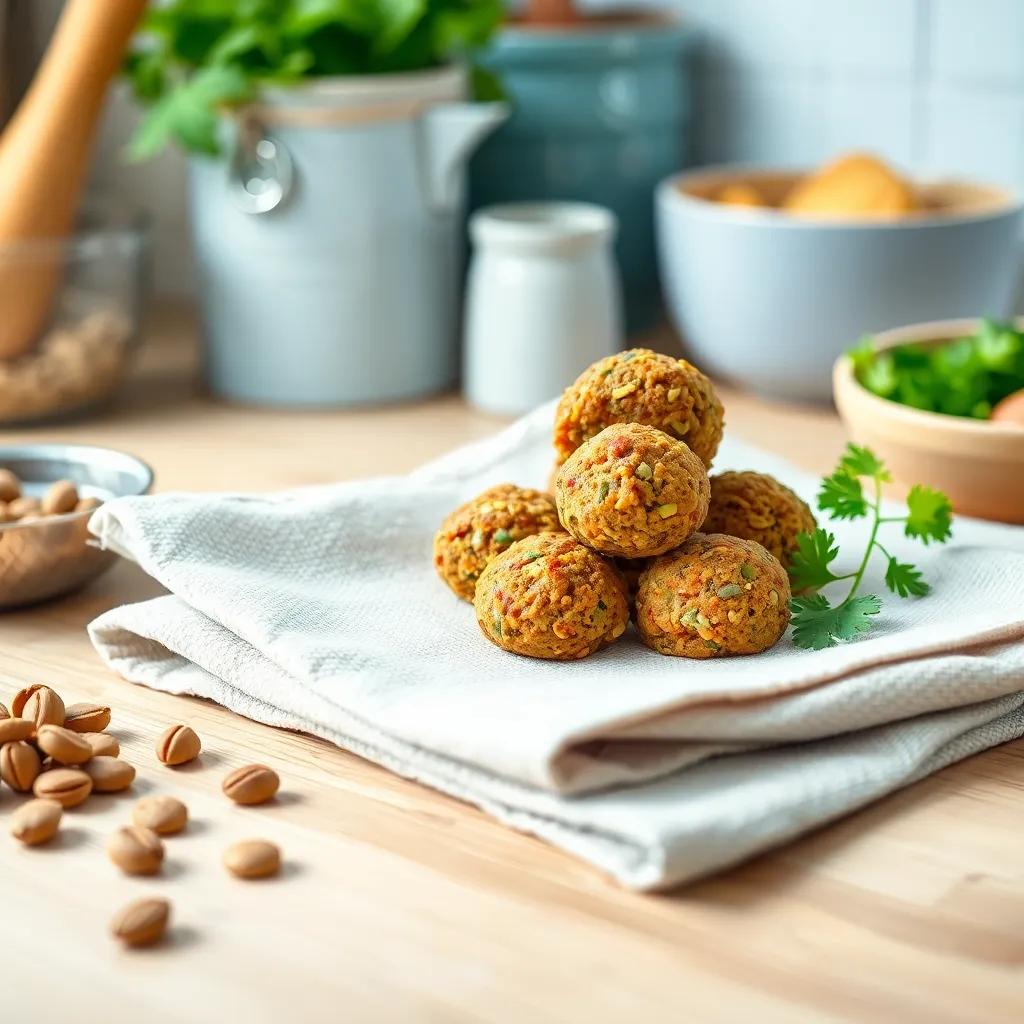
Ingredient Notes
When crafting the perfect falafel, a few key ingredients truly make all the difference in texture, flavor, and overall success. Let’s explore what makes these components special, along with handy tips for selecting and substituting them if needed.
Dried Chickpeas
The foundation of any authentic falafel, dried chickpeas packed with starch and fiber give the falafel its characteristic crumbly yet cohesive texture once ground. Soaking them overnight is essential—not only to soften them but also to ensure they blend into a coarse, grainy mixture rather than a mushy paste. Avoid using canned chickpeas here; their higher moisture content can cause the falafel to fall apart or turn soggy during frying. If you’re short on time, soaking chickpeas for at least 8 hours in plenty of cool water is sufficient, but longer is better for optimal texture.
Fresh Herbs: Parsley & Cilantro
These vibrant herbs don’t just add color—they infuse the falafel with fresh, bright notes that balance the earthiness of the chickpeas. Fresh parsley provides a mild, slightly peppery bite, while cilantro delivers a citrusy, aromatic lift. When buying, look for firm, bright green leaves without wilting or browning. If you find one hard to come by, feel free to increase the quantity of the other or supplement with fresh mint for a unique twist.
Chickpea Flour (or Gluten-Free Flour)
Chickpea flour acts as a natural binder, helping the falafel mixture hold its shape without compromising the gluten-free nature of the recipe. It also deepens the chickpea flavor while contributing to a crisp exterior once fried. If chickpea flour is unavailable, almond flour or a mild gluten-free flour blend can work as a substitute, but be mindful of differences in texture and absorbency—add gradually to reach the right consistency.
Baking Powder
Though a small addition, baking powder works quietly behind the scenes to create airy, light falafels with a gentle rise during frying. It introduces tiny pockets of air, preventing the mixture from becoming too dense or heavy. Use fresh baking powder and avoid skipping it, especially if you want a crisp but tender bite.
With these ingredients thoughtfully chosen and prepared, your falafel will emerge crispy on the outside and tender inside—ready to be enjoyed alone or nestled in your favorite gluten-free wraps.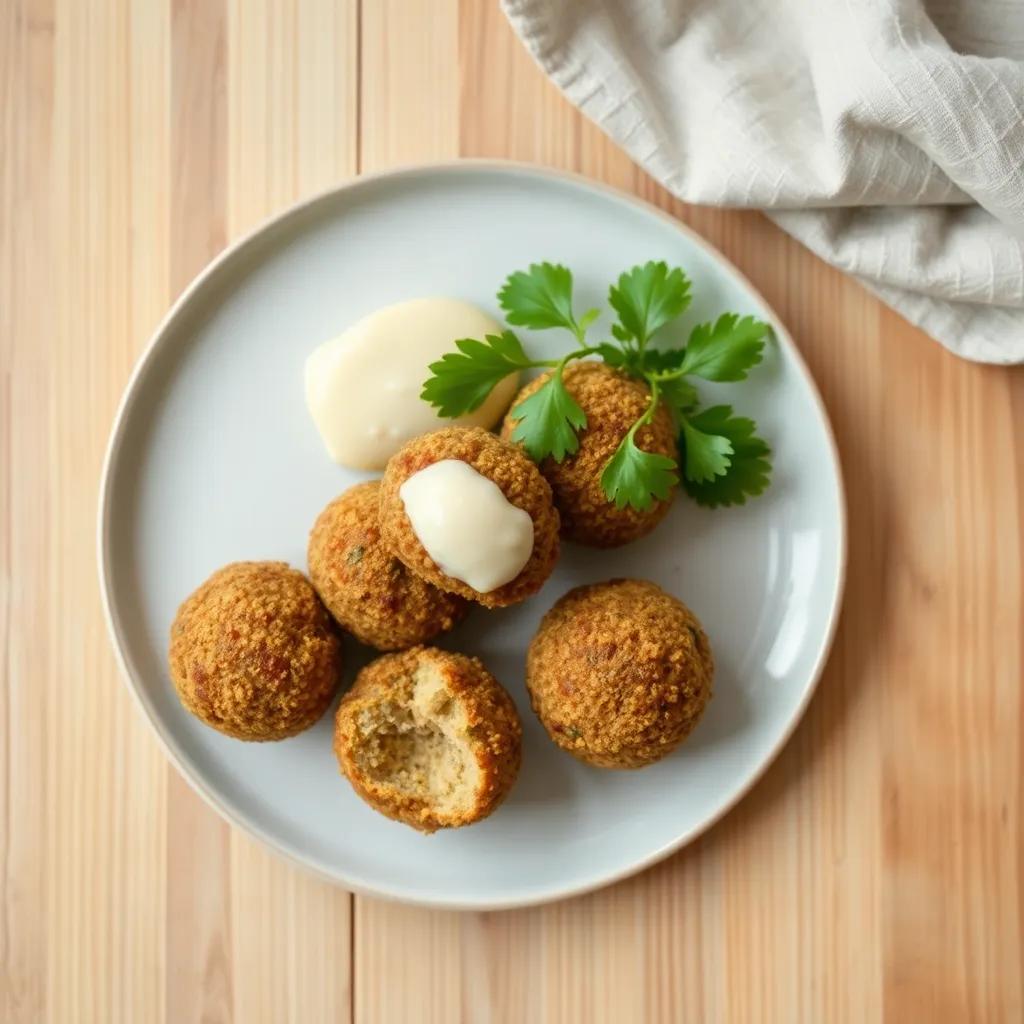
Tips & Variations
Achieving perfectly crispy falafel with a tender, flavorful interior is both an art and a science—luckily, a few key tips can elevate your results every time. First, make sure your chickpeas are well-drained and patted dry before processing; excess moisture is the enemy of crispiness and can cause the falafel to fall apart during frying. After mixing, resting the falafel batter in the fridge for at least 30 minutes is crucial—it firms up the mixture, making it easier to shape and helping maintain the falafel’s structure when cooking.
When frying, maintaining the oil temperature around 350°F (175°C) is essential. Oil that’s too cool leads to greasy falafel, while oil that’s too hot can brown the exterior too quickly, leaving the inside undercooked. Use a deep, heavy-bottomed pan and avoid overcrowding; frying in small batches ensures consistent crispness and even cooking.
For those seeking less oil-intensive methods, baking or air-frying present excellent alternatives. To bake, preheat your oven to 400°F (200°C), lightly brush or spray the falafel with oil, and bake on a parchment-lined tray for 20–25 minutes, flipping halfway through. Air-frying at 350°F (175°C) for about 12–15 minutes also yields crispy falafel with less oil, though the texture may be slightly different than traditional frying.
Looking to customize? Experiment with the herbs! Swap out cilantro for fresh mint for a brighter, more refreshing flavor, or add dill for an unexpected twist. Spice lovers can turn up the heat by increasing cayenne pepper or adding a pinch of smoked paprika or ground chili flakes. If you prefer a milder falafel, omit the cayenne entirely and boost the cumin and coriander for a warm, earthy depth.
For gluten-intolerant or allergy-sensitive cooks, this recipe already uses gluten-free flours, but you can swap chickpea flour for oat flour or brown rice flour depending on availability—just adjust the amount slightly as absorption varies. Similarly, if chickpea flour is tricky to find, a finely ground almond meal works, although it lends a nuttier flavor and softer texture.
If you want to boost nutrition and texture, try mixing in finely chopped vegetables like grated zucchini or carrots. Be sure to squeeze out excess moisture from veggies to maintain the right batter consistency. For extra protein and creaminess, a small spoonful of tahini stirred into the mixture before resting can add depth.
Finally, for a whole meal transformation, turn your falafel into sliders by pressing the mix into mini patties, frying, and serving on gluten-free buns with your favorite toppings—avocado slices, tomato, pickles, and a vegan garlic mayo make for a delicious handheld feast. Whether you keep it classic or experiment with flavors and cooking methods, these falafels are incredibly versatile, ready to adapt to your taste and lifestyle needs.
Leftovers & Storage
After savoring your freshly cooked crispy vegan falafel, you might find yourself with some tasty leftovers—and that’s great news! Proper storage ensures you can enjoy that golden crunch and rich flavor even days later without compromising quality.
To keep your falafel at its best, allow the pieces to cool completely at room temperature after cooking, but don’t leave them out for more than two hours to prevent spoilage. Once cooled, transfer them into an airtight container or a glass storage dish with a tight-fitting lid. This helps lock in freshness and prevents the falafel from absorbing unwanted odors from your fridge.
Stored in the refrigerator, falafel will stay fresh and delicious for up to 3–4 days. Reheating is best done in an oven or air fryer—simply place the falafel on a baking sheet or in the air fryer basket and heat at around 350°F (175°C) for 5 to 10 minutes. This method revives the crisp exterior better than microwaving, which often leaves falafel soggy or chewy.
If you want to keep your falafel for longer, freezing is an excellent option. Lay the falafel balls or patties in a single layer on a parchment-lined baking tray and freeze them for about 1 to 2 hours until firm. Then transfer them to a freezer-safe bag or container, separating layers with parchment or wax paper to avoid sticking. Properly frozen, falafel can last up to 2 months without losing much flavor or texture.
When ready to enjoy frozen falafel, thaw them in the refrigerator overnight or gently at room temperature for 20 to 30 minutes. Reheat following the same crisping method—oven or air fryer—for a delightful, freshly crisped bite.
Because these falafels freeze and reheat so well, they’re perfect for meal prepping. Prepare a large batch ahead of time and portion them out into grab-and-go containers for quick lunches or snacks during busy days. Pair with fresh salads or a dollop of tahini sauce for an easy, nourishing meal anytime.
By storing and reheating your falafel with care, you can keep the flavors vibrant and the texture satisfyingly crisp, making every bite as enjoyable as the first.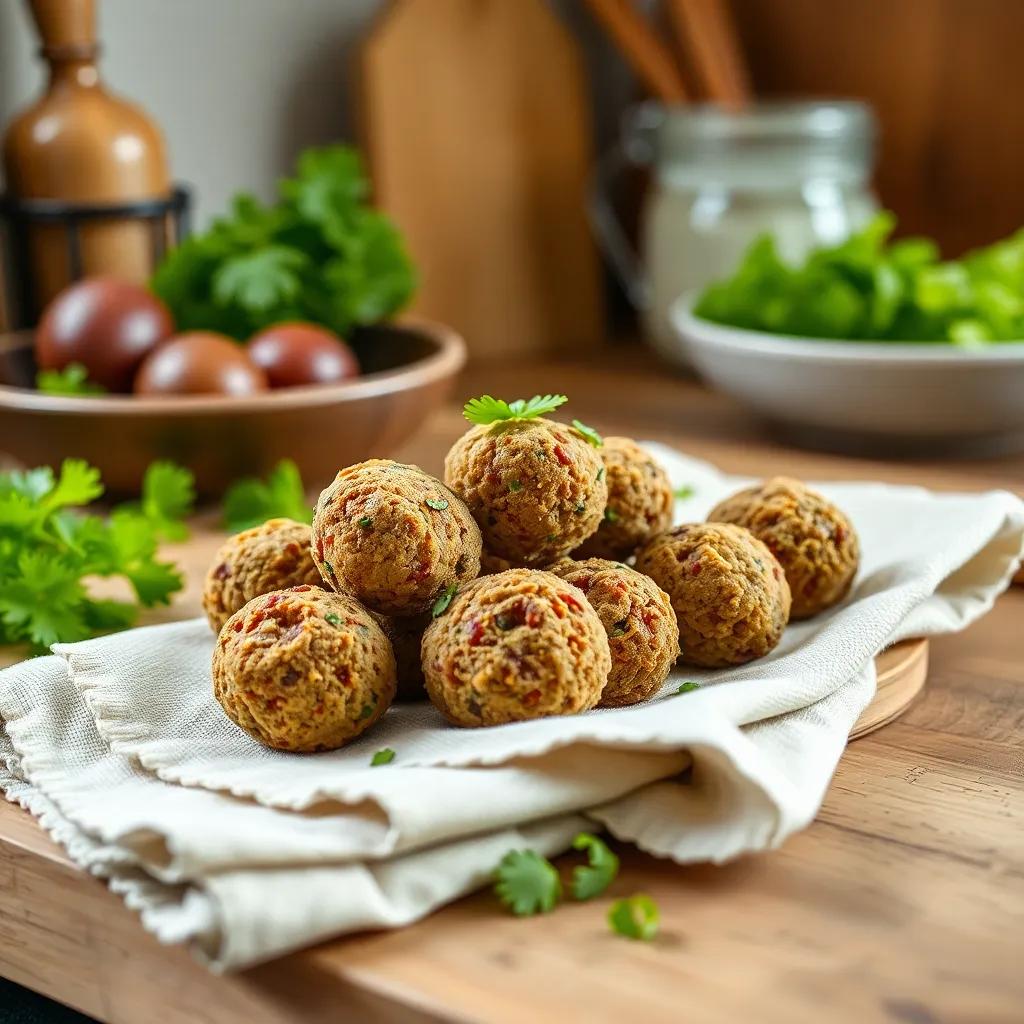
Behind the Recipe
Falafel is more than just a delicious bite; it’s a culinary emblem steeped in history and tradition, tracing back centuries to the Middle East. While its exact origin is hotly debated, many food historians suggest falafel was born in Egypt as a humble street food crafted by Coptic Christians, who ate no meat during Lent. Over time, this simple combination of chickpeas, herbs, and spices traveled across the region, evolving into beloved national dishes from Lebanon to Israel and beyond. This recipe honors that rich heritage by staying true to classic flavors while embracing modern, health-conscious twists like gluten-free flours and vegan preparation.
On a personal note, falafel has always held a special place at the family table—a symbol of sharing and warmth. The ritual of soaking chickpeas overnight, mixing fragrant herbs, and shaping the mixture into little rounds carries a quiet mindfulness, connecting cooks to generations past. For many, the crispy exterior coupled with a tender, herbaceous interior is a comforting taste of home or a gateway to exploring new cultural cuisines. By mastering this easy, healthy falafel recipe, you’re tapping into a story that spans continents and centuries, turning everyday ingredients into a timeless, joyous experience. Whether served at lively gatherings or enjoyed as a solo snack, each falafel is a small celebration of culinary tradition reinvented for today’s tastes and dietary needs.
FAQ
Can I use canned chickpeas instead of dried ones?
Is there a gluten-free option for binding the falafel?
How can I store and reheat leftover falafel?
Can I add different herbs or spices to change the flavor?
What’s the best oil to use for frying falafel?
Can I bake the falafel instead of frying?
Let’s Get Cooking!
Whether you’re a seasoned vegan or simply looking to add a wholesome, crispy treat to your meals, this falafel recipe offers a perfect balance of flavor, health, and ease. Its gluten-free charm makes it a versatile favorite that’s sure to delight your taste buds and nourish your body with every bite.
Give it a try, and don’t hesitate to share your experience—drop a comment, rate the recipe, or tell us about your own creative spin! We’d love to hear how you make this crispy vegan falafel your own. Happy cooking!

